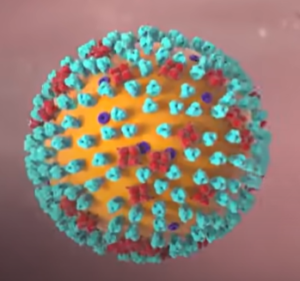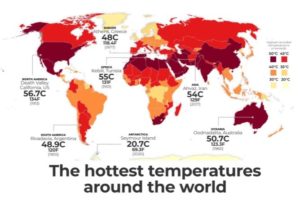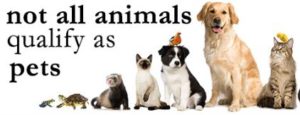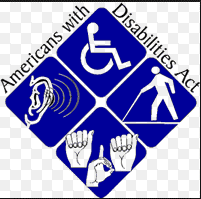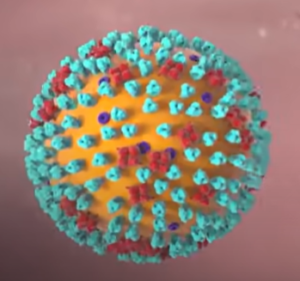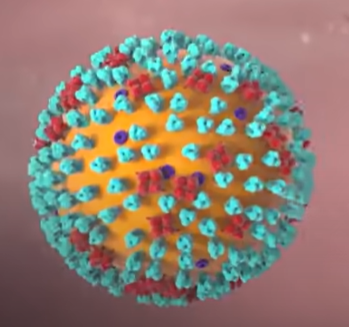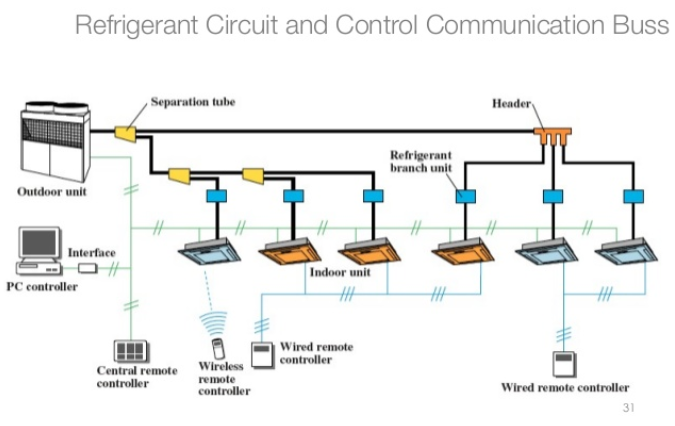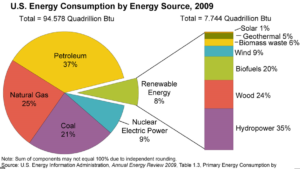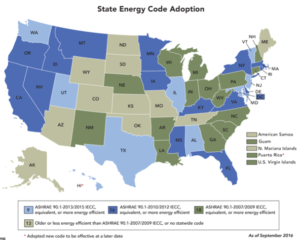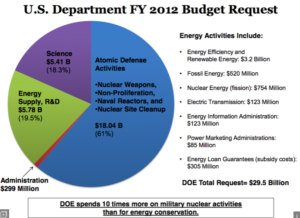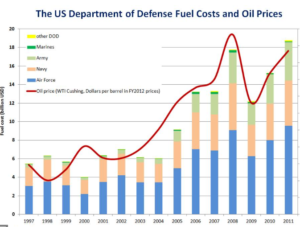6 2 2021
Dr. Saum K. Nour
This subject, of course like many others dealing with health and safety, has been forefront of my concerns in our industry.
Unfortunately, the cost of construction is the locomotive of most changes in the industry. Not health and safety.
Presentation below was given a while back in 2017, yet I updated and created brand new presentation. I want to thank articles by Ron George, were extremely helpful in packaging this presentation.
Basics of Plastic Piping
- Chemistry
- Organic vs inorganic
- Organic Chemistry: the chemistry of carbon compounds (other than simple salts such as carbonates, oxides, and carbides).
- Plastic: a synthetic material made from a wide range of organic polymers such as polyethylene, PVC, nylon, etc., that can be molded into shape while soft and then set into a rigid or slightly elastic form.
Common Poly (Many) + mer + s
|
|
Chemical Name |
|
Trade Name or
Common Name |
|
|
polyethylene |
|
|
|
|
poly(tetrafluoroethylene) |
|
Teflon |
|
|
polypropylene |
|
Herculon |
|
|
polyisobutylene |
|
butyl rubber |
|
|
polystyrene |
|
|
|
|
polyacrylonitrile |
|
Orlon |
|
|
poly(vinyl chloride) |
|
PVC |
|
|
poly(methyl acrylate) |
|
|
|
|
poly(methyl methacrylate) |
|
Plexiglas, Lucite |
|
|
polybutadiene |
|
|
|
|
polychloroprene |
|
neoprene |
|
|
poly(cis-1,4-isoprene) |
|
natural rubber |
|
|
poly(trans-1,4-isoprene) |
|
gutta percha |

Section 509.0 of the Uniform Plumbing Code with a brief detour on vented appliance categories I, II, III, and IV.

CPC 2019
509.0 Venting of Appliances
509.1 Listing
Type B and Type B-W gas vents shall comply with UL 441, and Type L gas vents shall comply with UL 641.
509.1.1 Installation
Listed vents shall be installed in accordance with Section 509.0 and the manufacturer’s installation instructions. [NFPA 54:12.2.1]
509.1.2 Prohibited Discharge
Appliance vents shall not discharge into a space enclosed by screens having openings less than 1/4 of an inch (6.4 mm) mesh.
509.2 Connection to Venting Systems
Except as permitted in Section 509.2.1 through Section 509.2.7, all appliances shall be connected to venting systems. [NFPA 54:12.3.1]
509.2.1 Appliances Not Required to Be Vented
The following appliances shall not be required to be vented:
A single listed booster-type (automatic instantaneous) water heater, when designed and used solely for the sanitizing rinse requirements of a dishwashing machine, provided that the appliance is installed with the draft hood in place and unaltered, if a draft hood is required, in a commercial kitchen having a mechanical exhaust system. Where installed in this manner, the draft hood outlet shall not be less than 36 inches (914 mm) vertically and 6 inches (152 mm) horizontally from any surface other than the appliance. [NFPA 54:12.3.2(5)]
Other appliances listed for unvented use and not provided with flue collars. [NFPA 54:12.3.2(10)]
509.2.2 Maximum Input Rating
Where any or all of the appliances in Section 509.2.1(1) and Section 509.2.1(2) are installed so the aggregate input rating exceeds 20 (Btu/h)/ft3 (207 W/m3) of room or space in which it is installed, one or more shall be provided with venting systems or other approved means for conveying the vent gases to the outdoors so that the aggregate input rating of the remaining unvented appliance does not exceed 20 (Btu/h)/ft3 (207 W/m3). [NFPA 54:12.3.2.1]
509.2.3 Adjacent Room or Space
Where the calculation includes the volume of an adjacent room or space, the room or space in which the appliances are installed shall be directly connected to the adjacent room or space by a doorway, archway, or other opening of comparable size that cannot be closed. [NFPA 54:12.3.2.2]
509.2.4 Ventilating Hoods
Ventilating hoods and exhaust systems shall be permitted to be used to vent appliances installed in commercial applications and to vent industrial appliances, particularly where the process itself requires fume disposal. [NFPA 54:12.3.3]
509.2.5 Well-Ventilated Spaces
The operation of industrial appliances such that its flue gases are discharged directly into a large and well-ventilated space shall be permitted. [NFPA 54:12.3.4]
509.2.6 Direct-Vent Appliances
Listed direct-vent appliances shall be installed in accordance with the manufacturer’s installation instructions and Section 509.8.2. [NFPA 54:12.3.5]
509.2.7 Appliances With Integral Vents
Appliances incorporating integral venting means shall be installed in accordance with the manufacturer’s installation instructions, Section 509.8 and Section 509.8.1. [NFPA 54:12.3.6]
509.3 Design and Construction
Venting systems shall be designed and constructed to convey flue, vent, or both gases to the outdoors. [NFPA 54:12.1]
509.3.1 Appliance Draft Requirements
A venting system shall satisfy the draft requirements of the appliance in accordance with the manufacturer’s instructions. [NFPA 54:12.4.1]
509.3.2 Appliance Venting Requirements
Appliances required to be vented shall be connected to a venting system designed and installed in accordance with the provisions of Section 509.4 through Section 509.15. [NFPA 54:12.4.2]
509.3.3 Mechanical Draft Systems
Mechanical draft systems shall be listed and installed in accordance with both the appliance and the mechanical draft system manufacturer’s installation instructions. [NFPA 54:12.4.3.1]
509.3.3.1 Venting
Appliances requiring venting shall be permitted to be vented by means of mechanical draft systems of either forced or induced draft design. [NFPA 54:12.4.3.2]
509.3.3.2 Leakage
Forced draft systems and portions of induced draft systems under positive pressure during operation shall be designed and installed so as to prevent leakage of flue or vent gases into a building. [NFPA 54:12.4.3.3]
509.3.3.3 Vent Connectors
Vent connectors serving appliances vented by natural draft shall not be connected into any portion of mechanical draft systems operating under positive pressure. [NFPA 54:12.4.3.4]
509.3.3.4 Operation
Where a mechanical draft system is employed, provision shall be made to prevent the flow of gas to the main burners where the draft system is not performing so as to satisfy the operating requirements of the appliance for safe performance. [NFPA 54:12.4.3.5]
509.3.3.5 Exit Terminals
The exit terminals of mechanical draft systems shall be not less than 7 feet (2134 mm) above finished ground level where located adjacent to public walkways and shall be located as specified in Section 509.8 and Section 509.8.1 of this code. [NFPA 54:12.4.3.6]
509.3.4 Ventilating Hoods and Exhaust Systems
Ventilating hoods and exhaust systems shall be permitted to be used to vent appliances installed in commercial applications. [NFPA 54:12.4.4.1]
509.3.4.1 Automatically Operated Appliances
Where automatically operated appliances, other than commercial cooking appliances, are vented through a ventilating hood or exhaust system equipped with a damper or with a power means of exhaust, provisions shall be made to allow the flow of gas to the main burners where the damper is open to a position to properly vent the appliance and where the power means of exhaust is in operation. [NFPA 54:12.4.4.2]
509.3.5 Circulating Air Ducts and Furnace Plenums
Venting systems shall not extend into or pass through a fabricated air duct or furnace plenum. [NFPA 54:12.4.5.1]
509.3.6 Above-Ceiling or Nonducted Air Handling System
Where a venting system passes through an above-ceiling air space or other nonducted portion of an air-handling system, it shall conform to one of the following requirements:
The venting system shall be a listed special gas vent, other system serving a Category III or Category IV appliance, or other positive pressure vent, with joints sealed in accordance with the appliance or vent manufacturer’s instructions.
The vent system shall be installed such that no fittings or joints between sections are installed in the above-ceiling space.
The venting system shall be installed in a conduit or enclosure with joints between the interior of the enclosure and the ceiling space sealed. [NFPA 54:12.4.5.2]
509.4 Type of Venting System to Be Used
The type of venting system to be used shall be in accordance with Table 509.4. [NFPA 54:12.5.1]
VENTED APPLIANCE CATEGORIES. Appliances that are categorized for the purpose of vent selection are classified into the following four categories:
Category I. An appliance that operates with a nonpositive vent static pressure and with a vent gas temperature that avoids excessive condensate production in the vent. No condensation. Negative air
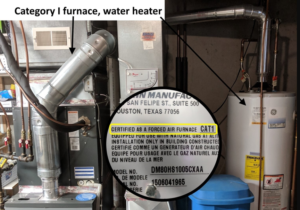
Category II. An appliance that operates with a nonpositive vent static pressure and with a vent gas temperature that is capable of causing excessive condensate production in the vent.
This Category does not have any equipment listed.
Category III. An appliance that operates with a positive vent static pressure and with a vent gas temperature that avoids excessive condensate production in the vent.
Fan pushes the air…. Pipes are positive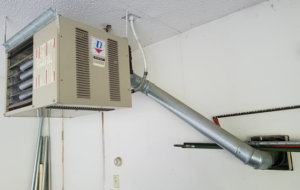
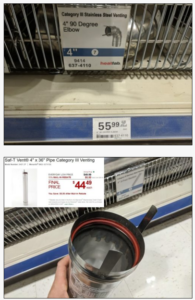
Category IV. An appliance that operates with a positive vent static pressure and with a vent gas temperature that is capable of causing excessive condensate production in the vent.
Positive pressure. Condensation.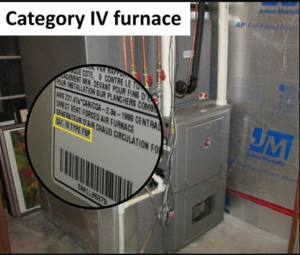
Back to Plumbing Code…
CPVC is used for higher operating temperatures than PVC. Be sure to follow manufacturer instructions to ensure quality sealed joints.
| TABLE 509.4 TYPE OF VENTING SYSTEM TO BE USED [NFPA 54: TABLE 12.5.1] |
| APPLIANCES |
TYPE OF VENTING SYSTEM |
LOCATION OF REQUIREMENTS |
|
| Listed Category I appliances |
Type B gas vent |
Section 509.6 |
|
|
|
|
|
| Listed appliances equipped with draft hood |
Chimney |
Section 509.5 |
|
|
|
|
|
| Appliances listed for use with Type B gas vent |
Single-wall metal pipe |
Section 509.7 |
|
|
Listed chimney lining system for gas venting |
Section 509.5.3 |
|
|
Special gas vent listed for appliances |
Section 509.4.3 |
|
|
|
|
|
| Listed vented wall furnaces |
Type B-W gas vent |
Section 509.6(2), |
|
|
|
Section 509.6.1.2 |
|
|
|
|
|
| Category II appliances |
As specified or furnished by manufacturers of listed appliances |
Section 509.4.1 and Section509.4.3 |
|
| Category III appliances |
|
|
|
| Category IV appliances |
|
|
|
|
|
|
|
| Appliances that can be converted to use solid fuel |
Chimney |
Section 509.5 |
|
| Unlisted combination gas- and oil-burning appliances |
|
|
|
| Combination gas- and solid-fuel-burning appliances |
|
|
|
| Appliance listed for use with chimneys only |
|
|
|
| Unlisted appliances |
|
|
|
|
|
|
|
| Listed combination gas- and oil-burning appliances |
Type L Venting |
Section 509.6 |
|
|
Chimney |
Section 509.5 |
|
|
|
|
|
| Decorative appliances in vented fireplace |
Chimney |
UMC Section 911.2 |
|
|
|
|
|
| Gas-fired toilets |
Single-wall metal pipe |
Section 509.7 |
|
|
|
|
|
| Direct-vent appliances |
– |
Section 509.2.6 |
|
|
|
|
|
| Appliances with integral vents |
– |
Section 509.2.7 |
|
509.4.1 Plastic Piping
Where plastic piping is used to vent an appliance, the appliance shall be listed for use with such venting materials and the appliance manufacturer’s installation instruction shall identify the specific plastic piping material. [NFPA 54:12.5.2]
509.4.2 Plastic Vent Joints
Plastic pipe and fittings used to vent appliances shall be installed in accordance with the appliance manufacturer’s installation instructions. Where primer is required, it shall be of a contrasting color. [NFPA 54:12.5.3]
509.4.3 Special Gas Vents
Special gas vents shall be listed and installed in accordance with the special gas vent manufacturer’s installation instructions. [NFPA 54:12.5.4]
Operating Temperatures are Key
Whether your furnace is vented with metal or plastic depends on its operating temperature, which is related to the fuel being used. For example, wood and oil burn at very high temperatures, with flames reaching roughly 1100°F and the flue gas temperature (chimney temperature) ranging from 400° to 900° F when burning wood and between 350° and 500° F when burning oil.
Gas burns at different temperatures depending on the type of furnace and its efficiency. An older furnace that runs between 65 and 82% efficiency burns between 275° and 350° F. That’s lower than wood or oil, but still hot enough to require metal venting.
Newer, higher efficiency furnaces, run much cooler. A furnace running at 90 to 98% efficiency burns at only 85° to 150° F. When these furnaces burn gas, they form a liquid and mild acid condensate (so they are called condensing furnaces). Not only do these high-efficiency models not need a metal vent due to their low burning temperature, but a metal flue would actually rust over time due to the mild acid that’s formed. As a result, the vent of a high-efficiency furnace needs to be corrosion resistant and liquid tight. Plastic — typically PVC or CPVC — is perfect. It would be possible to use high-quality stainless steel, however, that’s very expensive, so it is rarely used.
Types of Venting
A conventional brick or metal chimney relies on the buoyancy of the warm flue gasses to move the gasses up and out. Because the warm air rising only works if it can rise, it needs a vertical vent. This type of chimney is sometimes called “natural venting” or “gravity venting.”
By contrast, new furnaces have an electric-powered blower that pushes the flue gasses out. These go by several names — draft fan, draft blower, draft inducer, or inducer blower. The blower makes it possible to vent out the side of a house — sidewall venting or horizontal venting.
One advantage to the old-style venting system is that multiple appliances can be combined on the same vent. So, the water heater can be vented with the furnace, for example. In some cases, there could be three or four appliances using the same vent, as long as they all work with natural venting. The new PVC venting systems have to follow strict code and manufacturer guidelines and cannot be used for multiple appliances; each has to have its own vent.
An Easy Way to Know Your Furnace’s Efficiency
Whether you have a metal or plastic vent is a simple way to determine the efficiency of your current furnace. If it’s metal, you know you’re running in that 65-80% range. If that’s the case, it may be time to consider replacing your system with a new, more efficient unit. There are many options available, and over a short period of time, you can recoup the cost of a new system with the energy savings you’ll get in exchange.
Of course, if you’ve got a plastic vent, you can rest assured that your furnace is running in that high-efficiency range of 90% or more. Congratulations!
Baseline Temperature/Upper Limit
Standardized reference points for all published PVC dimensions usually apply to a temperature of 73 degrees F. Colder temperatures typically do not affect PVC piping’s strength, but as PVC piping gets warmer, it becomes more pliable and less able to hold pressurized fluid. The precise upper temperature limit can vary slightly depending on the exact specifications of the PVC pipe. However, generally speaking, the upper limit of PVC pipes is 140 degrees F; beyond that temperature, the PVC piping is at risk of losing its structural integrity.
Temperature Effect on PVC Dimensions
Temperature changes can cause slight variations of the dimensions of PVC piping, most notably in the length of the pipe. Generally speaking, you can expect a change of approximately 3/8-inch in length per every 100 feet of piping for every 10 degree F temperature change; this rule is typical of all PVC piping regardless of diameter. This phenomenon occurs both with increases in temperature, from the baseline temperature, and with decreases in temperature.
Temperature Effect on Pressure Capacity
The pressure capacity of the PVC diminishes from the baseline of 73 degrees as the temperature increases. To determine the diminished pressure capacity, you should use the following numbers: at 80 degrees, multiply the baseline pressure by .88, at 90 by .75, 100 by .62, 110 by .52, 120 by .40, 130 by .30, and 140 by .22. For example, if the PVC pipe has a baseline pressure capacity of 400 PSI at 73 degrees Fahrenheit, then the pressure at 110 degrees would be produced using the formula 400 x .50 = 200; your new pressure capacity is 200 PSI. Decreasing temperatures do not adversely affect the baseline pressure capacity of the pipes; for temperatures below 73 degrees F, you should refer to the published baseline pressure capacity.
Temperature Effect on Pipe Stiffness
The pressure capacity of the PVC diminishes from the baseline of 73 degrees as the temperature increases. To determine the diminished pressure capacity, you should use the following numbers: at 80 degrees, multiply the baseline pressure by .88, at 90 by .75, 100 by .62, 110 by .52, 120 by .40, 130 by .30, and 140 by .22. For example, if the PVC pipe has a baseline pressure capacity of 400 PSI at 73 degrees Fahrenheit, then the pressure at 110 degrees would be produced using the formula 400 x .50 = 200; your new pressure capacity is 200 PSI. Decreasing temperatures do not adversely affect the baseline pressure capacity of the pipes. For temperatures below 73 degrees F, you should refer to the published baseline pressure capacity.
Nominal Pipe
Size (Inches) |
Sch 40 Max. Pipe
Working Pressure PSI |
Sch 80 Max. Pipe
Working Pressure PSI |
| 1/8″ |
810 |
|
| 1/4″ |
780 |
|
| 3/8″ |
620 |
|
| 1/2″ |
600 |
509 |
| 3/4″ |
480 |
413 |
| 1″ |
450 |
378 |
| 1-1/4″ |
370 |
312 |
| 1-1/2″ |
330 |
282 |
| 2″ |
280 |
243 |
| 2-1/2″ |
300 |
255 |
| 3″ |
260 |
225 |
| 3-1/2″ |
240 |
|
| 4″ |
220 |
194 |
| 5″ |
190 |
173 |
| 6″ |
180 |
167 |
| 8″ |
160 |
148 |
| 10″ |
140 |
140 |
| 12″ |
130 |
137 |
| 14″ |
130 |
|
| 16″ |
130 |
|
Pressure derating of the fittings that results when the operational temperature of the pipe or fittings changes.
Operating
Temp (°F) |
De-Rating
Factor |
| 73 |
1.00 |
| 80 |
0.88 |
| 90 |
0.75 |
| 100 |
0.62 |
| 110 |
0.51 |
| 120 |
0.40 |
| 130 |
0.31 |
| 140 |
0.22 |
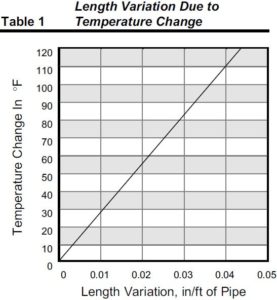
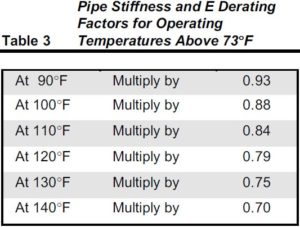
| Plastic Pipe Material |
Operating Temperature |
| With Pressure |
Without Pressure |
| (oF) |
(oC) |
(oF) |
oC) |
| ABS – Acrylonitrilebutadiene Styrene |
100 |
38 |
180 |
82 |
| PE – Polyethylene |
100 |
38 |
180 |
82 |
| PVC – Polyvinylchloride |
100 |
38 |
140 |
60 |
| CPVC – Chlorinated Polyvinyl Chloride |
180 |
82 |
180 |
82 |
| PB – Polybutylene |
180 |
82 |
200 |
93 |
| PP – Polypropylene |
100 |
38 |
180 |
82 |
| SR – Styrene Rubber Plastic |
150 |
66 |
|
|
Maximum Short Time Operating Temperature
– for pipes without pressure.
- PVC : 95 oC-203 F
- PP : 100 oC- 212 F
- PE : 95 oC
Heat Distortion Temperature
– is the temperature where a test piece of a material placed in a heat medium with a bending load (18.6 kg/cm2) applied – reaches a specified deflection.
- ABS: 104 – 106 oC 2192F
- PVC: 54 – 80 oC 129.2-176 F
- HDPE: 43 – 49 oC
- LDPE: 32 – 41 oC
- PP: 57 – 64 oC
Vicat Softening Temperature
– is the temperature where a needle shaped penetrator sinks into a test piece a specified depth when a specified vertical load (1 kg) is applied.
- ABS: 102.3 oC
- PVC: 92 oC
- PE: 127.3 oC
- PP: 152.2 oC
One of the critical concerns of my use of plastics within building structures is the following graph, release of toxic fumes within building when released in he building.
Polymer + Heat -> Thermal Decomposition Products Decomposition Products + Oxygenated Radicals-> Combustion Products + Heat
The maximum operating temperature for PVC pressure pipe is 140°F.
PVC pipe and conduit becomes stiffer with decreasing temperature and more flexible with increasing temperature. As with dimensions and pressure capacity, published pipe stiffness figures are applicable only for 73°F operating temperatures.
On a practical level, heating PVC pipe can cause distortion. With a melting point of about 176 degrees Fahrenheit, PVC pipes may bend as the material approaches this temperature. Active PVC pipes should never be heated beyond 158 degrees.
PVC is resistant to ignition. The temperature required to ignite rigid PVC is more than 150 C (302 F) higher than that required to ignite wood.
Aging of plastic through time or heat: Plastic undergoes through process where Thermoplast becomes Thermoset.
Water Heater Structure- Note flue piping specified
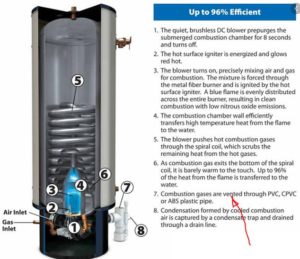
Following are from Ron George Article:
As stated in the International Code Council’s International Fuel Gas Code 503.4.1.1:
Plastic pipe and fittings used to vent appliances shall be installed in accordance with the appliance manufacturer’s installation instructions.
Furthermore, several of the ASTM standards applicable to PVC plastic pipe and fittings that this company manufactures their pipe to include the following note: This standard specification for PVC pipe does not include requirements for pipe and fittings intended to be used to vent combustion gases.
There is no standard referenced in any of the codes in the United States for a plastic flue vent for combustion flue gas piping, although many water heater and boiler manufacturers recommend this.
There is a Canadian standard, ULC S636, but that standard has several flaws in that it allows flue gas temperatures that exceed the temperature limits of the pipe material manufacturers.
The maximum temperatures listed in the ABS, PVC and CPVC pipe manufacturers’ technical literature are shown in the following table. Any temperatures above the rated temperature will allow the pipe to melt, sag and, possibly, collapse or pull apart. There are serious consequences with carbon monoxide asphyxiation and fire that cannot be ignored.
Generally, for a new condensing water heater or boiler, the stack temperature will be about 20 degrees higher than the water temperature. The design and efficiency of the unit, along with several other factors, including water quality, will affect the stack temperature. If a water heater is set to store water at 140 F to minimize Legionella bacteria growth, the flue gas temperature will be about 160 F when the heater is new.
As scale builds up and the heater efficiency falls off, the flue gas temperatures can easily increase to over 350 degrees F. Even if someone had their water heater set at 120 F, with scaling, the flue gas temperatures can rise well above 300 F. Boiler thermostats or burner controls are generally limited to 200 F, commercial water heater thermostats or burner controls to 180 F and residential water heater burner controls to 160 F, and all can overshoot by several degrees. As scale builds up on the heating surfaces, the scale insulates the flue gases from the hot water in the system, causing the flue gas temperatures to increase.
Some boiler and water heater manufacturers offer stack or flue gas temperature gauges as a way to see whether the unit is scaling up and losing efficiency, which is helpful for monitoring the flue condition. A temperature sensor or probe with a high-limit control could be inserted into the flue at the flue connection to the boiler or water heater.
This control would shut off the burner if the flue gas temperature exceeds the temperature rating of the flue pipe.
A standard will be needed for plastic flue pipes that should include a temperature gauge and a high limit probe. Then PVC, CPVC and polypropylene flue gas piping can be safely used on high efficiency boilers and water heaters. This would be an answer to the dilemma of cost versus safety
Without a standard for proper use of these safety devices in combination with plastic flue gas piping or without the use of stainless steel flues, plastic flue materials can melt as flue gas temperatures rise. Not only is energy lost when this happens but flues can become blocked or disconnected, which can be a carbon monoxide or a fire danger.
A family of four died in Aspen, Colorado, in 2008, of carbon monoxide poisoning from the failure of PVC plastic flue pipes on a condensing snow melting boiler system in a rental property. The plastic pipe manufacturer was not at fault, because they had published limitations on the use of their piping, and they had not recommended PVC piping for that application. The boiler manufacturer that recommended using PVC pipe as flue material was a target of the liability claim by surviving family members.
The Canadian standard, ULC S636, covers the design, construction and performance of gas venting systems intended for negative or positive pressure venting of gas-fired appliances producing flue gases having temperatures under the following:
- Class I venting systems are suitable for gas-fired appliances producing flue gas temperatures of more than 135 C (275 F) but not more than 245 C (473 F);
- Class II venting systems are suitable for gas-fired appliances producing flue gas temperatures of 135 C (275 F) or less;
- Class II venting systems are further classified into four temperature ratings as follows:
(A) Up to and including 65 C (149 F)
This temperature limit was intended to allow the use of PVC pipe for use as a flue gas material. The temperature limit for PVC pipe is 140 F, and the allowable temperature in the ULC S636 standard exceeds the temperature limits set by PVC pipe manufacturers.
(B) Up to and including 90 C (190 F)
This temperature limit was intended to allow the use of CPVC pipe for use as a flue gas material. The temperature in the pipe manufacturer technical data is 180 F. The ULC S636 standard allows the material to exceed the limit for CPVC piping by 10 degrees Fahrenheit.
(C) Up to and including 110 C (230 F)
This temperature limit was intended to allow the use of Polypropylene (PP) pipe for use as a flue gas material. There is currently one manufacturer listed to this standard, but the potential for the flue gases to exceed the 230 F is still there. A high-limit switch to shut off the boiler or water heater would be advisable.
(D) Up to and including 135 C (275 F)
I am not aware of any plastic pipe manufacturers that meet this sub-section of the standard. The potential for the flue gas temperatures to exceed the 230 F is still there. A high-limit switch to shut off the boiler or water heater would be advisable.
The final Irony: PVC manufacturer does not want to take the liability of use of their plastic piping in the venting…….
One of the PVC piping manufacturer’s technical manuals has the following information:
Using Plastics for Combustion Gas Venting
The piping manufacturer recommends that inquiries about the suitability of plastic piping systems for venting combustion gasses should be directed to the manufacturer of the water or space heating equipment being installed.
As stated in the International Code Council’s International Fuel Gas Code 503.4.1.1:
Plastic Pipe and fittings used to vent appliances shall be installed in accordance with the appliance manufacturer’s installation instructions.
Furthermore, several of the ASTM standards applicable to PVC plastic pipe and fittings that this manufacturer, manufacture’s their pipe to include the following note:
This standard specification for PVC pipe does not include requirements for pipe and fittings intended to be used to vent combustion gases.
